Office lighting is something that many business owners tend to overlook, so it comes as no surprise that poor lighting is one of the most frequent complaints among office workers. Lighting is an important interior design element for offices because it has such a strong impact on productivity.
The amount and type of light you are exposed to influences your sleep cycle, ability to focus and even to make decisions. Poor lighting results in eye strain, headaches, fatigue and, as you’d expect, a loss of productivity.
We could say that the first mistake business owners make is that they underestimate the importance of good lighting. You can see if your office lighting could use an upgrade by simply asking your employees if they’re happy with the present conditions and if they’ve had any problems like eye strain or frequent headaches.
Still, office lighting can be tricky. To help you get started, we will go through 6 of the most common mistakes and how to avoid them.
1. Not Taking Advantage of Natural Lighting
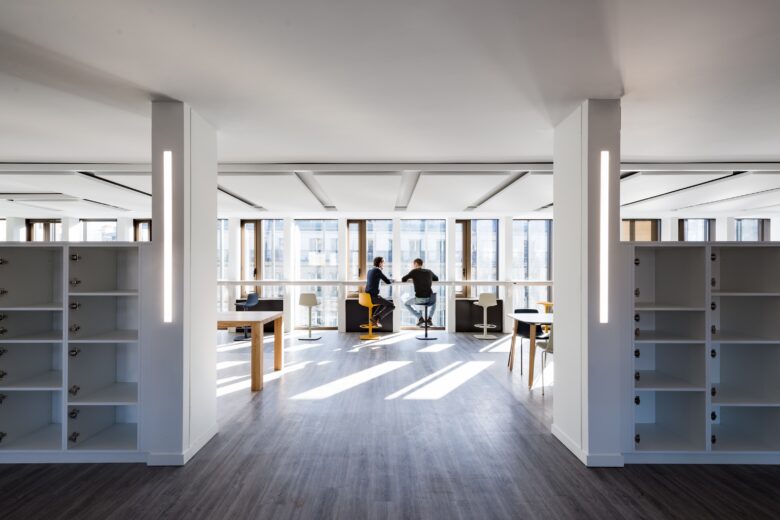
Source: lamp.es
As you probably know, windows are highly valued in any office setting, and you’ll often see work colleagues quarrelling over who gets a desk by the window. That’s because artificial light will never be able to provide all the benefits you get from natural light. Getting enough natural light helps you sleep better, improves mood, energy and focus.
Incorporating more natural light in your office space will not only boost productivity by creating a healthy and comfortable environment for your staff, but you’ll also be able to reduce energy costs and protect the environment by minimizing energy waste.
2. Using Fluorescent Tubes
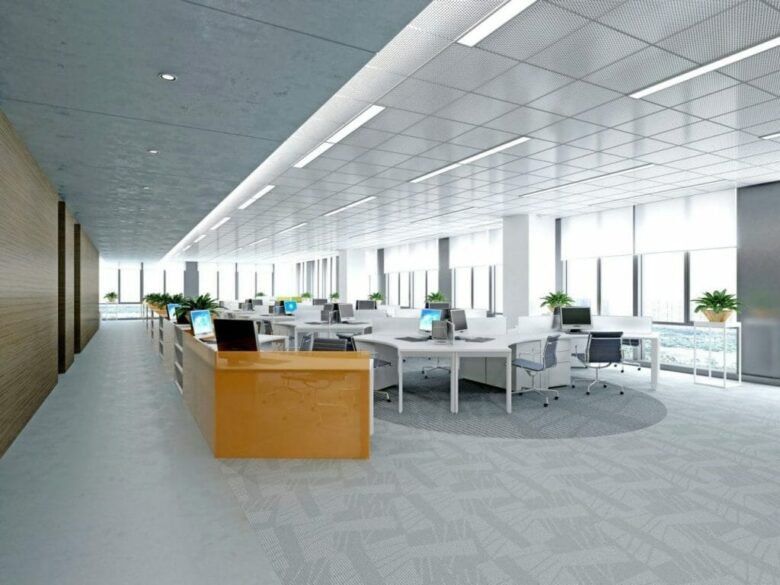
Source: ledlightingsupply.com
Fluorescent tubes are so popular in office settings because they’re inexpensive and can be conveniently installed on the ceiling to light large areas. However, as time passes, they become dimmer, start to flicker and create that all too familiar buzzing noise. Once again, this can be very distracting for your employees.
According to ledlightexpert.com, LED lighting may be more expensive but long-term, it’s a more economical option. They last longer, use less energy, and the quality of light will be more consistent, which makes the office environment more comfortable for everyone.
3. Buying Without Planning
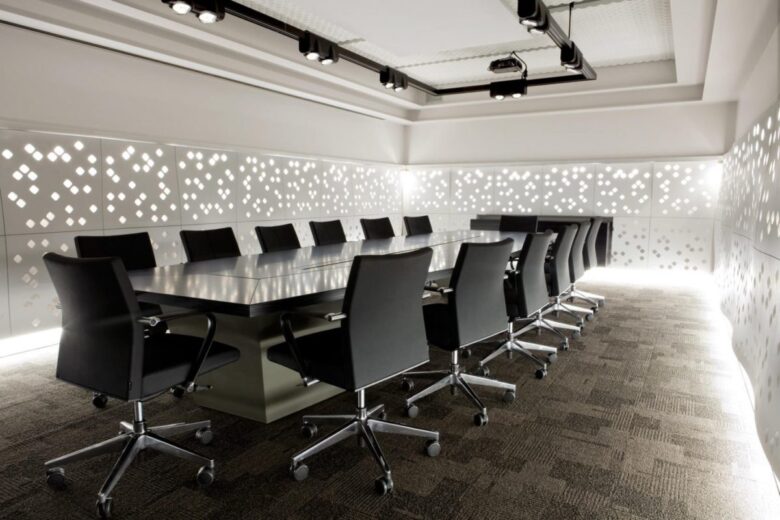
Source: modern.place
Another common mistake is buying without planning. This can result in poorly distributed light and glare.
Like any feature of your office, the lighting must be well planned before making a purchase. Keep in mind that not all areas of your office require the same type of light and you’ll need to layer overhead light, task lights and ambient lights.
The entrance will need a different type of light as the hallways, reception area, desks and break rooms. All of this has to be planned, so you don’t choose the wrong light fixtures and overspend to replace them.
If you’re not sure whether or not the light in your offices is poorly distributed, look for dark areas and uneven lighting. A noticeable difference in light levels means your eyes have to constantly readjust when moving from one level to another, which strains your eyes and makes it difficult to see and concentrate.
4. Relying Exclusively on Overhead Lighting
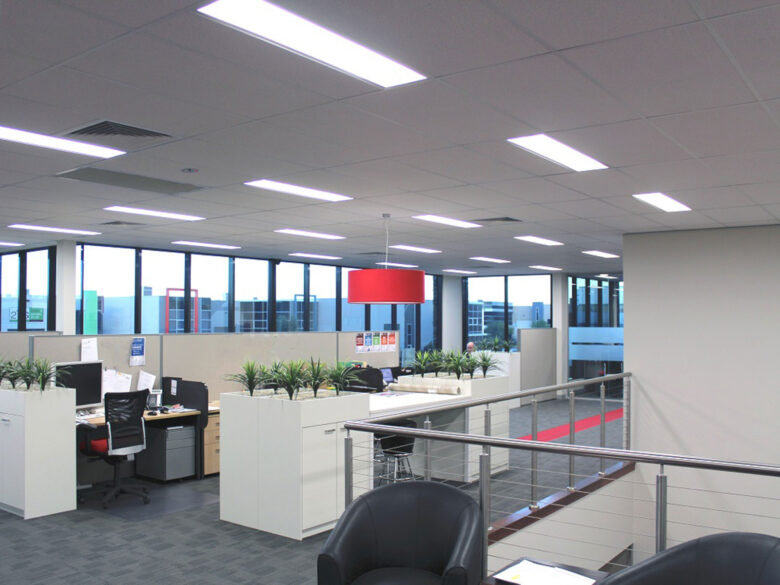
Source: upshine.com
Relying exclusively on overhead lighting can make your office feel cold and clinical. To increase comfort and aesthetic appeal, the lighting should be layered. This means it has to come from different sources, placed at different heights and with different intensities. Overhead lighting needs to be combined with sconces and dimmers.
Furthermore, your employees will need table lamps for task lighting. Task lighting in an office helps you reduce energy costs and increase productivity. If the lighting on work stations is a bit brighter than the rest of the office, it will make it easier for your employees to focus.
Task lighting also allows employees to adjust the light at their workstations according to their needs. Keep in mind that lighting needs also change as you age. The older you get, the more light you need. This means that if you use only overhead lighting, some employees will have trouble reading documents, while others will feel like the office is too bright, and it strains their eyes.
The best way to fix this problem is to reduce the intensity of the overhead lights with a dimmer switch and place task lights at every workstation.
5. Color and Temperature
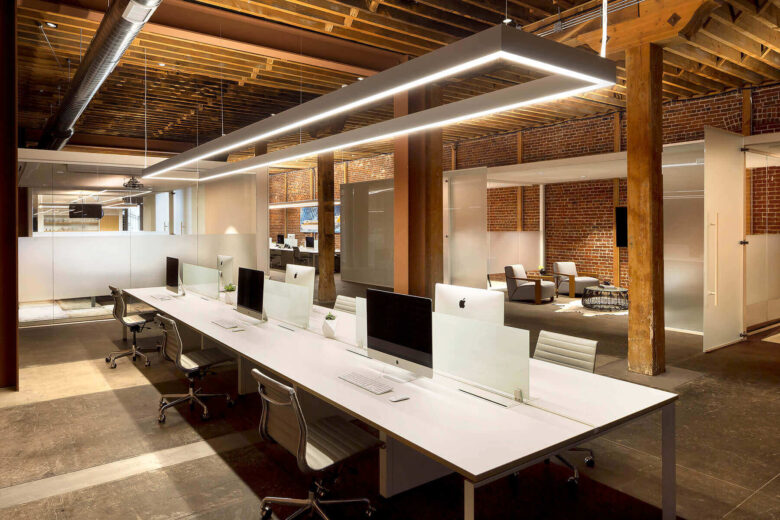
Source: alconlighting.com
The color and temperature of your office lights will depend on the purpose of each area. For example, lights that are cooler or neutral in color will help employees stay alert while they’re working, but warmer hues are more suitable for break rooms since they help people relax.
Light color and temperature affect mood, heart rate, energy levels, and the circadian rhythm because they trigger the release of different hormones in the body. Although your first thought may be to keep light neutral and bright throughout the day, so your employees remain alert and focused, it’s better to change it based on the time of the day. If possible, in the afternoon, office lighting should be switched to warmer hues so the staff can wind down. Otherwise, it can result in trouble sleeping, which will also decrease productivity.
6. Improper Installation
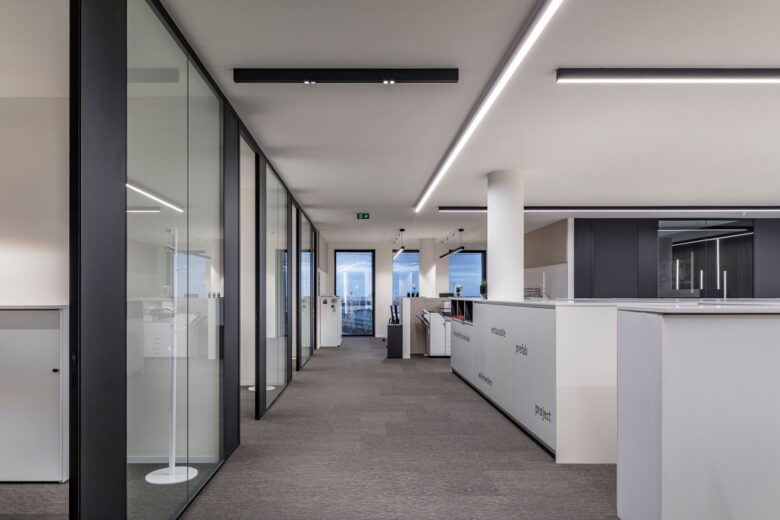
Source: pinterest.com
If you’re the owner of a small business, it might be tempting to install the lighting fixtures in your office by yourself so you can reduce costs, but it’s better to leave this job to professionals. First of all, it’s dangerous. There’s a risk of electrocution and burns. Second of all, you might not install it properly, which might cause costly damages to your lighting system.
A better way to save money is to hire a reputable contractor that can advise you on how to reduce energy consumption. For example, they can install lighting control systems that can help you make the most of natural daylight and regulate energy use in different areas of the office. Occupancy control sensors will switch off lights when certain areas like bathrooms, corridors, and meeting rooms are not in use.
Working with a contractor will also help you make sure your lighting system complies with regulations so you can avoid paying hefty fines in case of inspection.




